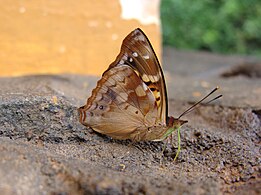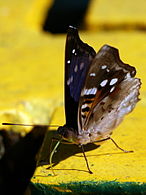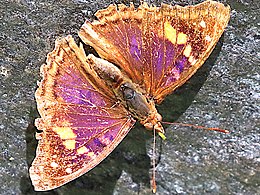| Agathina emperor | |
|---|---|
 | |
| Male | |
 | |
| Female | |
| Scientific classification | |
| Domain: | Eukaryota |
| Kingdom: | Animalia |
| Phylum: | Arthropoda |
| Class: | Insecta |
| Order: | Lepidoptera |
| Family: | Nymphalidae |
| Genus: | Doxocopa |
| Species: | D. agathina |
| Binomial name | |
| Doxocopa agathina (Cramer, 1777) | |
| Synonyms | |
| |
Doxocopa agathina, the agathina emperor, is a species of butterfly of the family Nymphalidae. It is found in the Guyanas, northern Brazil, and the Amazon region. It is also called the purple emperor but this name may also refer to the European butterfly Apatura iris .




